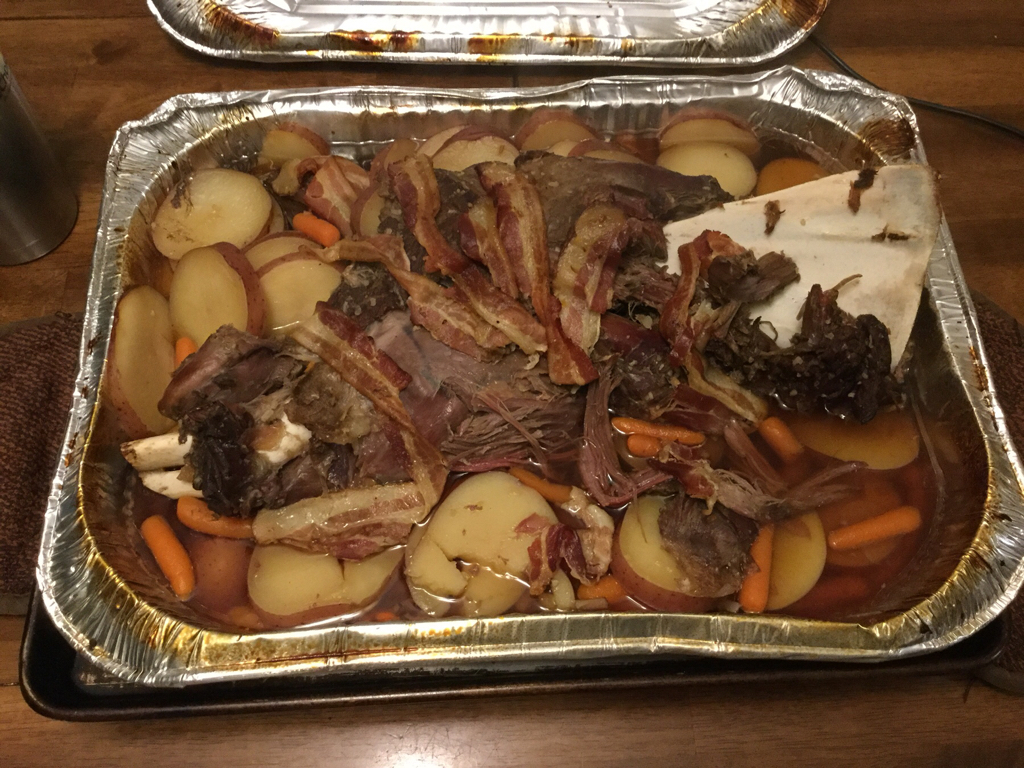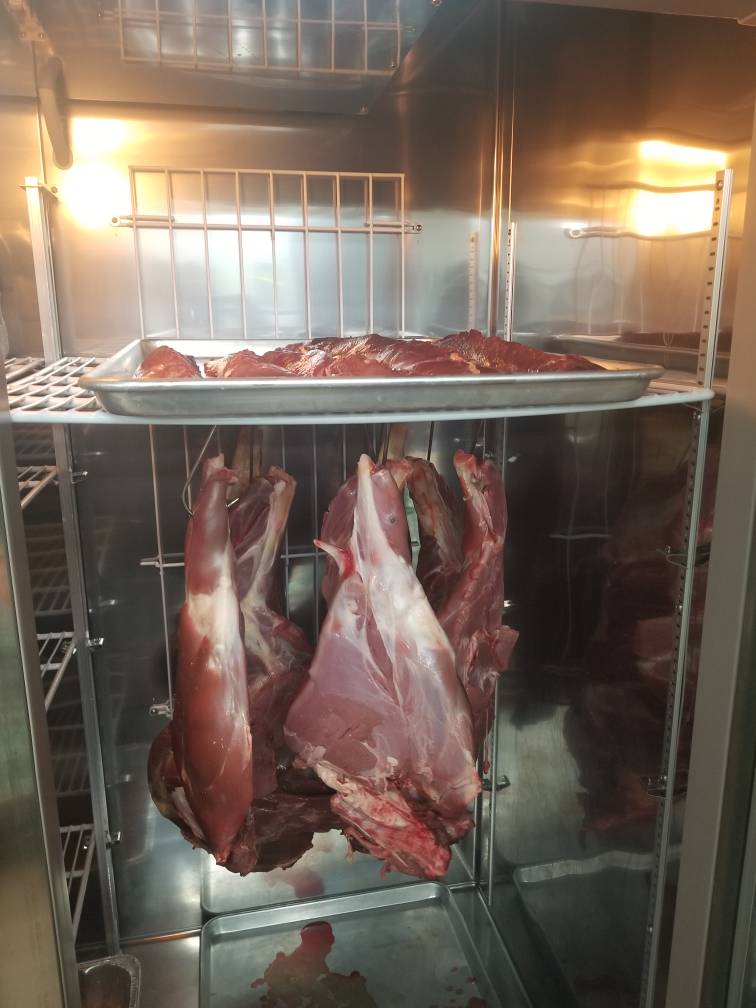I have butchered my own for 30 or more years and I have a system down that suits me and it suits my schedule. When I get a deer home I take the tender loins out and either cook them right then or freeze them.Which ever time allows. Then I hang the deer in the shade for a couple of days. If it's hot i have the chest cavity full of frozen gatoraid bottles and a bag of ice on the hind quarters. I change those out as needed. After a couple of days I quarter it, taking the backstraps, both hind quarters, front shoulders and neck. I put them in large ice chests that the bottom is lined with frozen gatoraid bottles and the meat wrapped in plastic trashbags. I place a bag of ice, unopened on top of the meat. The bottles keep the meat up out of any water and it can stay in there for several days with no problem at all as long as the ice is changed as needed.
I keep 1 front shoulder for smoking and de bone the other for slow cooker or pressure cooker meals.
The Hind quarter I break down to individual cuts, Top round, bottom round, sirloin, & eye of round. any scraps that come off of that process go into the grind pile. The shanks all go into the slow cook / pressure cook pile along with the neck which I debone before cooking. All big cuts of meat are weighed and frozen whole and cut to steaks or roasts after thawing. It normally takes me 3 nights about an hour and a half a night to butcher the whole thing, weigh every bag and have the kitchen looking presentable for the wife for the next morning.
The main thing is learn how to separate the muscle groups on the hind quarters to get those awesome pieces of meat whole. Use the smaller cuts to grind or slow cook.
The top round and bottom round are my favorite pieces other than the straps. I cut off all the fat but if your going to slow cook it dont worry too much about all the silver skin and connective tissue in between all the small muscles, the cooking method breaks all that down. But if your cutting into steaks you do need to get it all off though. Roasts need to be cleaned up some too but they too can be cooked so that they don't need that much. Once you figure out which is better ground, which is a roast and which can be made into steaks you'll have it down.
The method of cooking determines a lot of how much you want to clean the meat up.
This is the process I use. It may not work for everyone but It does for me, There wasn't any internet when I first started shooting deer so most of this I came up with before then. There may be better ways to do it but I have never had any meat go bad or anything. It was in the upper 70"s when my daughter shot a doe last week and I did everything just as explained above. Grind as much as you like but there are some great cuts of meat you helped it grow for you. Enjoy a good steak off of that hind quarter.


